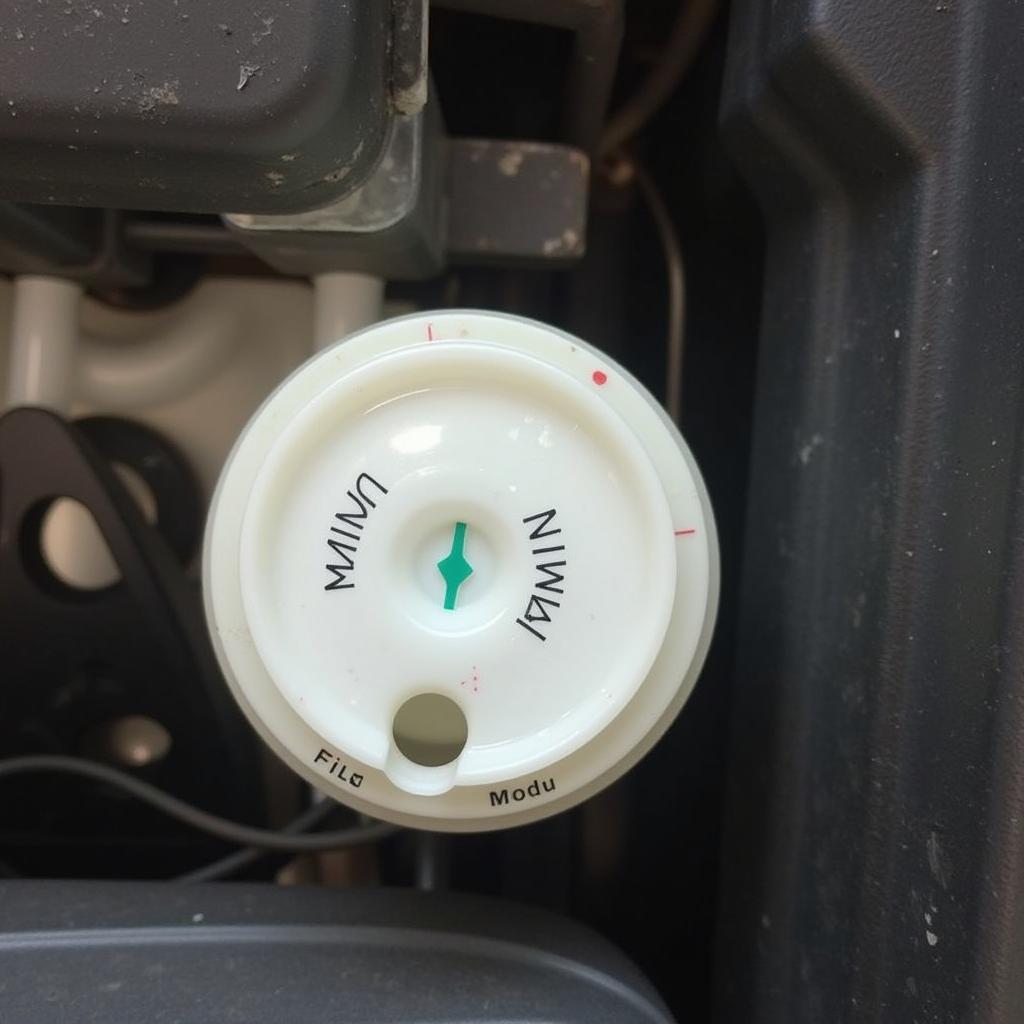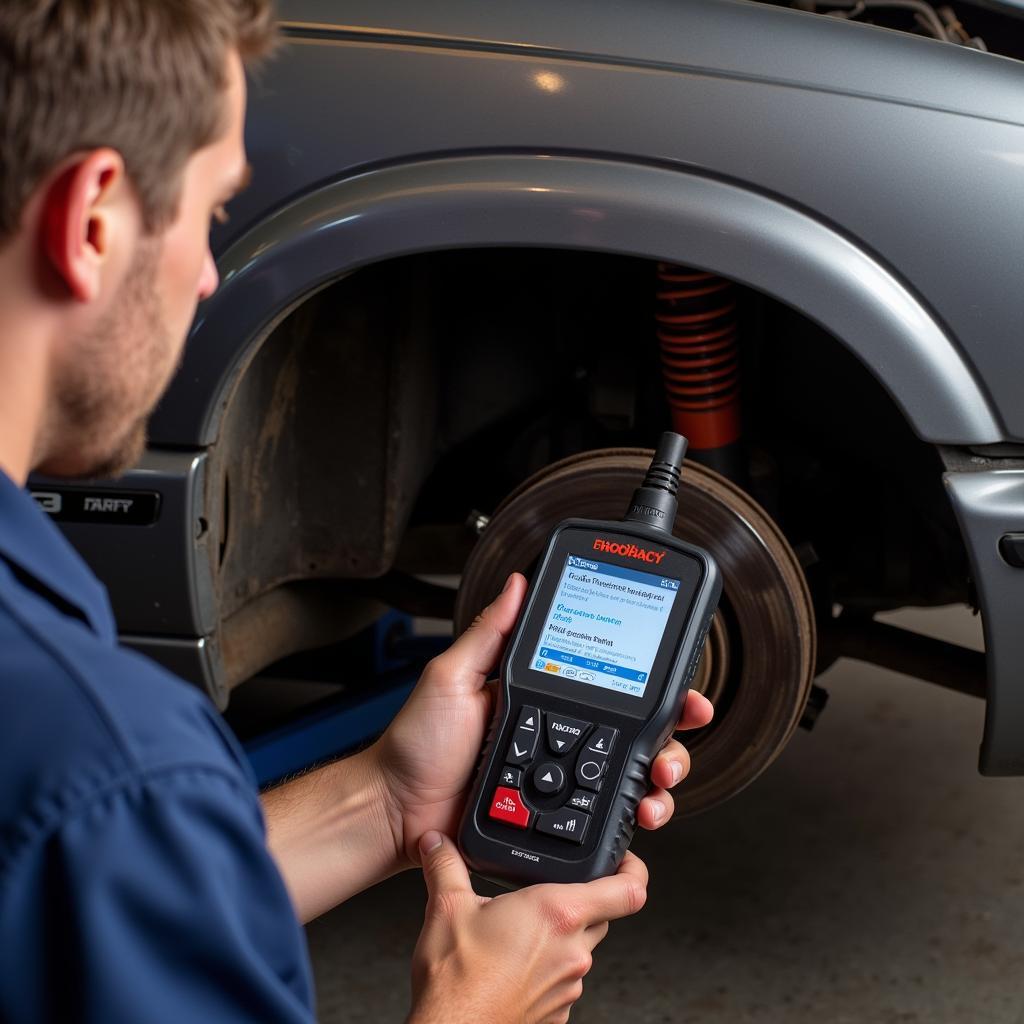The “brake warning light” on your dashboard is a crucial safety feature that should never be ignored. In a 1998 Chevy S10 pickup truck, this light can signal anything from a simple issue like low brake fluid to a more complex problem within the braking system. This article serves as your guide to understanding why that light is on and what steps you can take to address it.
Common Causes of a Lit Brake Warning Light in a 98 Chevy S10
Several factors can trigger the brake warning light in your S10. Let’s break them down:
-
Low Brake Fluid: This is the most common culprit. Over time, brake fluid levels naturally decrease as your brake pads wear down. However, a sudden drop in fluid could indicate a leak in the brake lines, hoses, or even the master cylinder.
-
Faulty Brake Light Switch: The brake light switch, usually located above the brake pedal arm, activates your brake lights when you press the pedal. A malfunctioning switch can cause the brake lights to stay on or off, triggering the warning light.
-
Worn Brake Pads: Brake pads have wear indicators designed to rub against the rotor and create a squealing sound when they need replacement. Sometimes, this contact can also trigger the brake warning light.
-
ABS Issue (if equipped): If your S10 has an Anti-lock Braking System (ABS), a problem with the ABS module, wheel speed sensors, or related wiring can illuminate the brake warning light.
-
Parking Brake Engaged: It might seem obvious, but accidentally leaving the parking brake even slightly engaged can cause the warning light to come on.
 Brake Fluid Reservoir
Brake Fluid Reservoir
Troubleshooting the Brake Warning Light
Before you panic, here’s a step-by-step approach to diagnose the problem:
-
Check the Parking Brake: Ensure the parking brake is fully released. If the light goes off, you’ve found your culprit.
-
Inspect the Brake Fluid Level: Locate the brake fluid reservoir under the hood (refer to your owner’s manual if unsure). The reservoir should have “Min” and “Max” markings. If the fluid level is below the “Min” line, carefully add the correct type of brake fluid for your S10.
-
Look for Leaks: While checking the fluid, visually inspect the brake lines, hoses, and the area around the master cylinder for any signs of leakage. Brake fluid is typically clear to light brown and has an oily consistency.
 Leaking Brake Line
Leaking Brake Line
-
Consider Brake Pad Wear: If your brake pads are significantly worn, they may be triggering the warning light. Listen for any unusual noises (like squealing) when you apply the brakes.
-
Check the Brake Light Switch: This component requires some mechanical aptitude to inspect. If you’re comfortable, locate the switch above the brake pedal arm and check for any loose connections or damage.
“Remember, safety is paramount when working on brakes. If you’re unsure about any step, it’s always best to consult a qualified mechanic,” advises John Miller, a certified automotive technician with over 20 years of experience.
What to Do If the Light Stays On
If you’ve checked all the basics and the brake warning light remains illuminated, it’s time to seek professional help. Driving with a persistent brake warning light can be dangerous. A qualified mechanic can diagnose the issue using advanced diagnostic tools, such as a scan tool to read the vehicle’s computer system for ABS-related codes or to pinpoint the root cause of the problem.
 Mechanic Diagnosing Brakes
Mechanic Diagnosing Brakes
Keeping Your Brakes in Top Shape
-
Regular Brake Inspections: Have your brakes inspected by a certified mechanic at least once a year or every 12,000 miles, whichever comes first.
-
Timely Brake Fluid Flushes: Brake fluid should be flushed and replaced every 24,000 miles or as recommended in your owner’s manual.
-
Quality Brake Pads: Opt for high-quality brake pads from reputable brands for optimal performance and longevity.
By adhering to a regular maintenance schedule and addressing warning signs promptly, you can ensure optimal braking performance and, most importantly, keep you and your 1998 Chevy S10 safe on the road.

